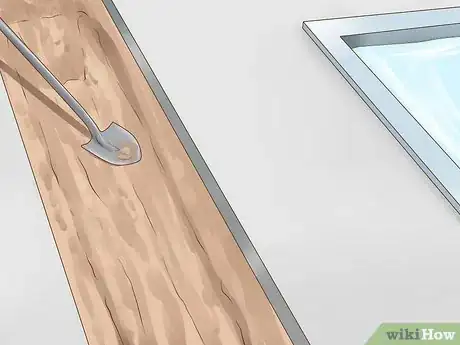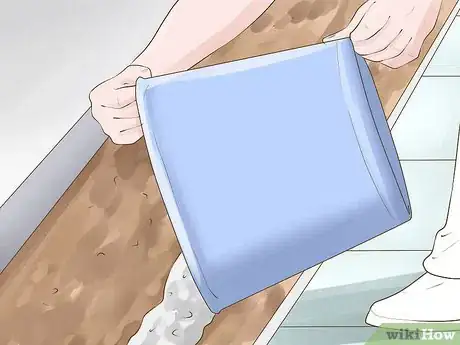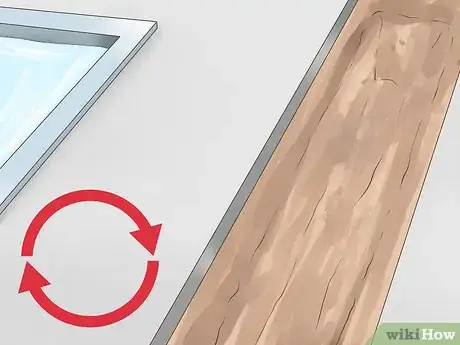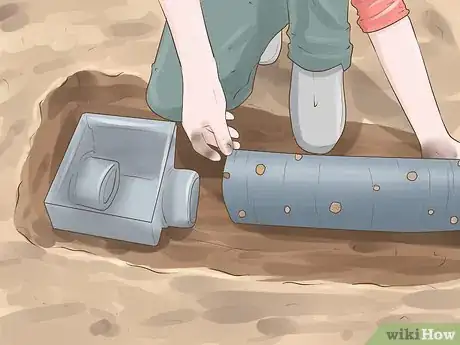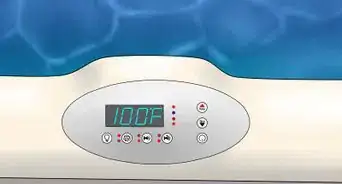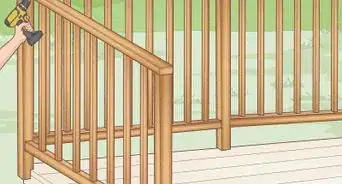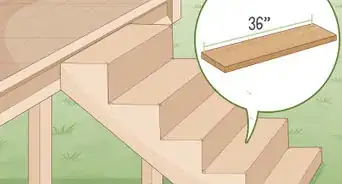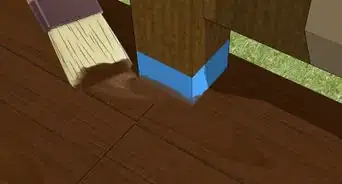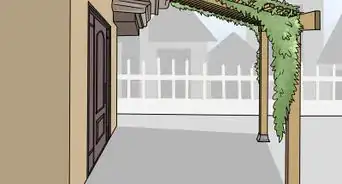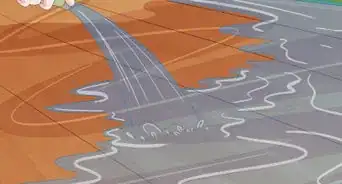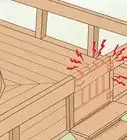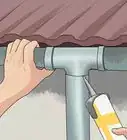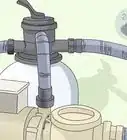This article was co-authored by Oz Tzalalihin. Oz Tzalalihin is a Project Manager for Vitoli Builders, based in Calabasas, California. He has a passion for working with sloped terrains and has shared his expertise through contributions to local publications. Oz holds a PMP (Project Management Professional) degree from Cornell University and specializes in building pools and structures on hillside properties. With his education and experience, he is a valuable asset to Vitoli Builders and is dedicated to delivering quality results and smooth construction.
This article has been viewed 53,682 times.
You love your pool and think that it's great. You have fun and play around all the time. There's just one problem, whenever it rains a mini flood occurs around your pool deck. Not only is this annoying, but it can also create a breeding ground for mosquito and damage your pool and home. Obviously this issue should be corrected, but how? Well, this wikiHow article will tell you how you can improve the drainage around your pool deck.
Steps
-
1Prepare the area. Although this is one of the smaller sections around the pool deck, it's important because it will drain this section of concrete pad into a corner French drain.
- Remove shrubs and landscaping to expose the edge of the concrete pool deck. Contain excess fill on the pool deck in a plastic liner supported by a ring of bricks.
- Plan for and move aside electrical cables and buried irrigation in the work zone. This is a busy area because of the pool pump's controls, lighting to the pool, a power run that leads around the pool, and an irrigation line.
- Tamp down the soil to the target depth for the later brickwork.
-
2Prepare to pour concrete. Between the concrete pad and the vertically installed brick is a run of bricks laid edgewise into the trench. This forms the gutter base, the vertical bricks form the gutter side and soil containment wall.
- Because the whole purpose is to drain water as fast as possible, do not use mortar to place these bricks. Instead, compact them firmly into the soil so that they press very tightly against each other. This allows small interconnection gaps that let water percolate straight into the manicured soil substrate.
- Take care through the entire base run to ensure a slight but constant downgrade for the gutter's base bricks leading to the French drain. #*Conversely, make the edge of the retaining wall bricks run as horizontally as possible. That's the part you'll see, so you don't want a ragged line.
- Pour concrete behind the brick of the retaining wall to a level that's just below the brick top on the other side. This helps lock the bases of the tall, vertical bricks so they stay fixed with a nice, straight face. You want this to look nice; a pool with surrounding gardens is a highly visited area.
Advertisement -
3Repeat the process around the other sides. This garden bed and its guttering will be tied into the French drain that's more than 24 feet (7.3 m) further back.
- Although this will improve both drainage and general yard maintenance, it's not hassle-free. Weeds just want to grow through the impossibly tight seams, and it's virtually impossible to pull them through those same tight gaps.
-
4Construct the French drains. The heart of draining huge quantities of water flowing through the gutters from the pool's concrete pad are the French drains. The project shown uses three drains with the possibility of adding a fourth.
- To work, a French drain design must account for the amount of rain and soil type in your area. If you have a high clay content, this might not work as well as it does in sandy soil.
- A French drain is nothing more than a hole or trench in the ground that lets water percolate into the substrate. This design adds two large stacked plastic cat-litter boxes, with many openings drilled into the sides and bottoms. The first plastic box is inserted into the raw soil to prevent it from caving in. A layer of coarse gravel prevents the second nested box from sticking.
- Once the depth is right, it's easy to maintain. The second box traps all of the loose soil, twigs, and leaves making it hassle-free to dump.
- Professional pool builders visit homeowners and find out their ideas. They take the measurements and determine the pool's perimeter.
- They construct a pool five feet away from the property line and do not build it under a power line because if you do so, you have to raise it.
- After narrowing down the existing footprint, they consider the optimal view the homeowner should see when they step inside the house.
Warnings
- Before digging, carefully locate and lift any power lines clear of your work-zone!⧼thumbs_response⧽
Things You'll Need
- Brick. This project used 3 cubes of brick. There are approximately 920 bricks per cube at $320 per cube.
- Paving stones for the perimeter garden beds
- Shovel
- 8" Tamper
- 2 pound Rubber mallet
- Garden hoe
- Garden rake
- Hedge clippers
- Saws-all
- Concrete and tools
